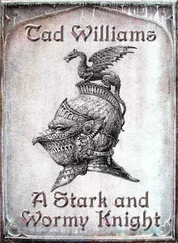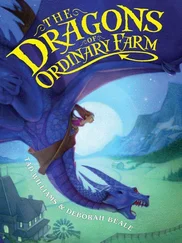This book is dedicated to my children, Connor Williams and Devon Beale, who as I write this are still small but extremely powerful. They amaze me every day.
Someday, when they are grown and their mother and I have ambled on to the Fields Beyond, I hope the two of them will be warmed by the knowledge of how fiercely we loved them, and a tiny bit embarrassed by how wickedly they took advantage of it, charming, funny little buggers that they are.
No book is written without help, and few authors need as much help as I do, so… on with the parade of gratitude!
Many thanks, as always, to my fabulous wife, Deborah Beale, for her unfailing support and brilliant help and discerning reader’s eye, and to my most excellent agent Matt Bialer, for having my back when the quibbles are flying.
Thanks also to our talented assistant, Dena Chavez, who keeps Deborah and I as close to sane as we are ever likely to get, in part by immense organizational skill, in part by preventing my beloved children from helping me too much when I really need to finish something.
My overseas editors, Tim Holman in the UK and Dr. Ulrike Killer in Germany, have been big supporters of my work and give me a great deal of confidence with all the projects I undertake. They have my overwhelming gratitude, too.
And of course all my friends at DAW Books—who also (conveniently!) happen to be my American publishers—including Debra Euler, Marsha Jones, Peter Stampfel, Betsy Wollheim, and Sheila Gilbert, cannot escape much vigorous thank-ification. Betsy and Sheila have been my editors and partners-in-crime since I started on this wild book-writing endeavor twenty years ago, and the more years that pass, the more I come to realize what a great gift that has been and how lucky I am. Thanks, guys. We’ve had fun, huh?
Last but not least, I must also mention that this particular book owes a huge debt of gratitude and inspiration to all the mad, wonderful folk on the Shadowmarch.combulletin board, a repository of wisdom, support, silliness, and recipes for rhubarb like no other. Thanks for Shadowmarch (the online project) are especially due to Josh Milligan and the incomparable Matt Dusek, the latter still helming the site as Tech Wizard in Residence. I hope many of you new readers will come and join us—I spend a lot of time kibitzing on the board there, and I’d enjoying meeting you.
For those who wish to feel securely grounded in the Who, What, and Where of things, there are several maps and, at the end of the book, indexes of characters and places and other important materials.
The maps have been complied from an exhaustive array of traveler’s tales, nearly illegible old documents, transcripts of oracular utterances, and the murmunngs of dying hermits, not to mention the contents of an ancient box of land-office records discovered at a Syannese flea market. A similarly arcane and wearying process was responsible for the creation of the indexes. Use them well, remembering that many have died, or at least seriously damaged their vision and scholarly reputations, to make these aids available to you, the reader.
With special Attention paid to Rise of the March Kingdoms of the North. Summarized by Finn Teodoros, scholar, from Clemon’s. The History of Our Continent of Eion and its Nations, at the request of his lordship Avin Brone, Count of Landsend, Lord Constable of Southmarch Presented this Thirteenthth day of Enneamene, in the year thirteen hundred and sixteen of the Holy Trigon.
For almost a thousand years before our Trigonate Era, history was written only in the ancient kingdoms of Xand, the southern continent that was the world’s first seat of civilization. The Xandians knew little about their northern neighbor, our continent of Eion, because most of its interior was hidden by impassable mountains and dense forests.The southerners traded only with a few pale-skinned savages who dwelled along the coasts, and knew little or nothing about the mysterious Twilight People, called “Qar” by the scholarly, who lived in many places across Eion, but were and are most numerous in the far north of our continent.
As generations passed and Xandian trade with Eion increased, Hierosol, the chief of the new trading port towns on the Eionian coast, grew as well, until it had become by far the most populous city of the northern lands. By about two centuries before the advent of the blessed Trigon, it had grown to rival in size and sophistication many of the decadent capitals of the southern continent.
Hierosol in its early years was a city of many gods and many competing priesthoods, and matters of doctrinal dispute and godly rivalry were often settled by slander and arson and bloody riots in the streets. At last, the followers of three of the most powerful deities—Perin, lord of the sky, Erivor of the waters, and Kernios, master of the black earth—made a compact. This trigon, the coalition of the three gods and their followers, quickly lifted itself above all the other priesthoods and their temples in power. Its leader took the name Trigonarch, and he and his successors became the mightiest religious figures in all of Eion.
With rich trade flooding through its ports, its army and navy growing in power, and religious authority now consolidated in the hands of the Trigonate, Hierosol became not just the dominant power in Eion, but eventually, as the empires of the southern continent Xand spiraled down into decadence, of all the known world. Hierosoline supremacy lasted for almost six hundred years before the empire collapsed at last of its own weight, falling before waves of raiders from the Kracian peninsula and the southern continent.
Younger kingdoms in Eion’s heartland rose from Hierosol’s imperial ashes. Syan outstripped the others, and in the ninth century seized the Trigonate itself, moving the Trigonarchy and all its great church from Hierosol to Tessis, where they still remain. Syan became the seat of fashion and learning for all Eion, and is still by most measures the leading power of our continent today, but its neighbors have long since shrugged off the mantle of the Syannese Empire.
* * *
Since a time before history, the men of Eion have shared their lands with the strange, pagan Qar, who were known variously as the Twilight People, the Quiet People, or most often “the fairy folk.” Although stories tell of a vast Qar settlement in the far north of Eion, a dark and ancient city of dire report, the Qar at first lived in many places throughout the land, although never in such concentrations as men, and mostly in rural, untraveled areas. As men spread across Eion, many of the Qar retreated to the hills and mountains and deep forests, although in some places they remained, and even lived in peace with men. There was little trust, though, and for most of the first millennium after the Trigon the unspoken truce between the two peoples was largely due to the small numbers of the Twilight folk and their isolation from men.
As the year 1000 approached, the Great Death came, a terrible plague that appeared first in the southern seaports and spread across the land, causing great woe. It killed in days, and few who were exposed to it survived. Farmers deserted their fields. Parents abandoned their children. Healers would not attend the dying, and even the priests of Kernios would not help perform ceremonies for the dead. Entire villages were left empty except for corpses. By the end of the first year it was said that a quarter of the people in the southern cities of Eion had succumbed, and when the plague returned with the warm weather the following spring, and even more died, many folk believed the end of the world had come. The Trigon and its priests declared that the plague was punishment for the irrehgiousness of mankind, but most men at first blamed foreigners and especially southerners for poisoning the wells. Soon, though, an even more obvious culprit was suggested—the Qar. In many places the mysterious Twilight People were already considered to be evil spirits, so the idea that the plague was caused by their malice spread quickly through the frightened populace.
Читать дальше











